
After George Herbert Walker Bush died on Nov. 30 at age 94, the mainstream press favorably contrasted him to Donald Trump, portraying the former Republican president as “kinder” and “gentler,” two watchwords from his inaugural speech.
But, Trump’s signature aggressivity towards immigrants is epitomized through extra-territorial interception and imprisonment and separation of families, brutal policies which were, in fact, pioneered by Bush I during the Haitian refugee exodus following the Sep. 30, 1991 coup d’état in Haiti.
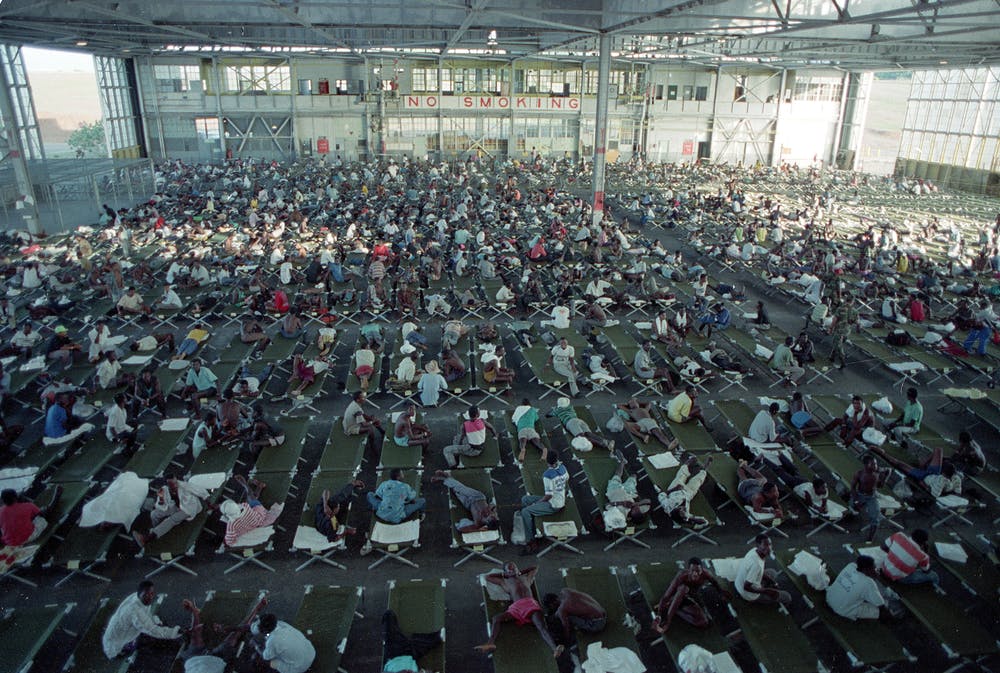
As we saw in this series’ first article, George H.W. Bush’s administration gave manifest and tacit support to dictator Prosper Avril (1988-1990) and to the first coup d’état against democratically-elected Pres. Jean-Bertrand Aristide.
As a result of that putsch, tens of thousands of Haitians took to the high seas in small boats, many fleeing for their lives. In the first year after the coup, the U.S. Coast Guard intercepted some 38,000 Haitians in international waters.
U.S. interdiction of Haitian refugees had begun in September 1981 under Pres. Ronald Reagan, for whom George H.W. Bush was vice-president. Under the rules laid out by Reagan’s Executive Order 12324 titled “Interdiction of Illegal Aliens,” Immigration and Naturalization Service (INS) agents on board U.S. Coast Guard cutters were supposed to interview and “identify candidates for asylum as political refugees under United States and international law,” explains University of Miami law professor Irwin Stotzky in his new book Send Them Back, about the efforts of crusading lawyers (including himself) on behalf of Haitian refugees during the 1980s.
The screening process was laughable, with interviews which were not private and as short as five minutes, while the snatched-up “boat-people” were often hungry, thirsty, scared, and confused.
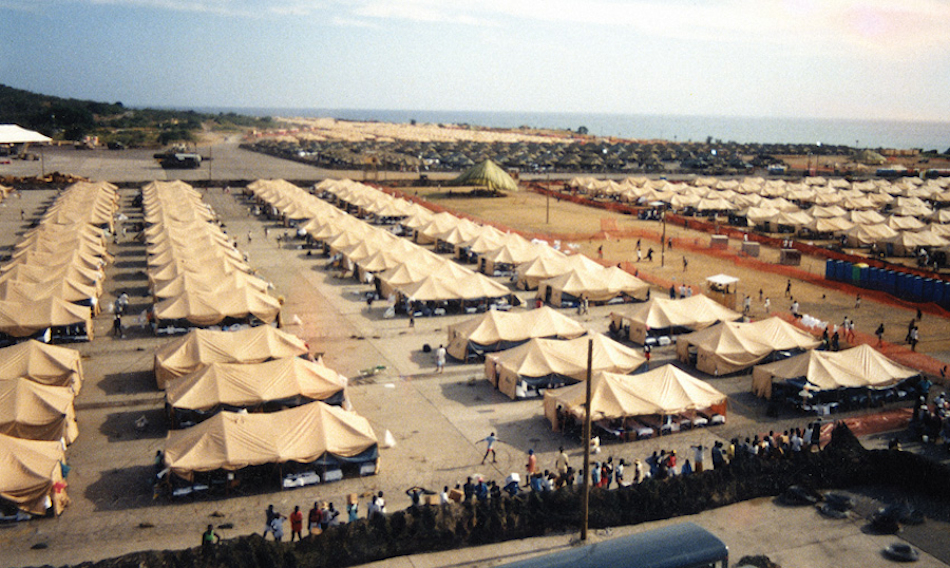
“As a result of these defective procedures, only 28 of the approximately 23,000 Haitians on vessels interdicted by the Coast Guard from the inception of the interdiction program in 1981 until mid-1991 were identified by INS officials as potential asylees,” Stotzky writes.
During Aristide’s eight months in office in 1991 (Feb to Sep), there was a net human influx back to Haiti, as thousands of joyful expatriate Haitians returned to their homeland to take part in a new democratic experiment after three decades of dictatorship.
But the 1991 military coup cruelly cut short that hope-filled period and provoked a new refugee wave which overwhelmed the U.S. Coast Guard ships stationed off Haiti’s coast. As a result, the Coast Guard began transporting Haitians to the U.S. Naval base at Guantanamo Bay, Cuba, housing them in giant hangars and Camp McCalla, a makeshift city of hundreds of tents set up on Guantanamo’s paved runways and loading docks. At its peak, there were over 12,500 Haitians detained there.
After eight months, the Bush I administration finally dropped all pretense of giving Haitians any due process and discarded the Reagan-era screening protocols, as imperfect as they were. “On May 24, 1992, claiming there were too many Haitians coming, Bush ordered the Coast Guard to intercept all Haitians fleeing in boats and immediately return them to Haiti, without interviews to determine if they were at risk of persecution or death,” Stotzky explained to Haïti Liberté.
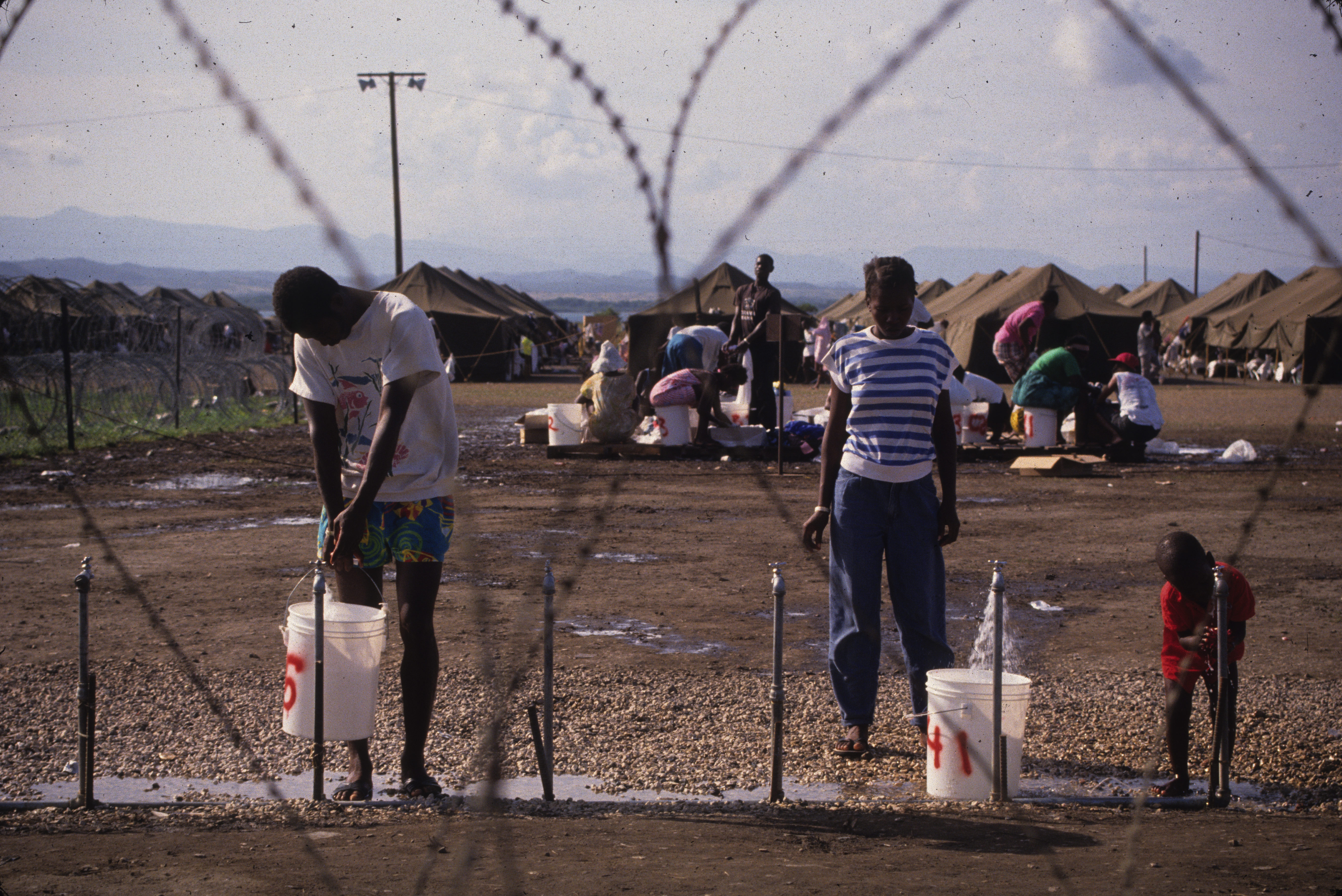
Beginning in 1991, “when the U.S. detained Haitian refugees indefinitely, it set a precedent,” concluded Prof. A. Naomi Paik in a comprehensive article last June about Haitians at Guantanamo on the website The Conversation.
This was the beginning of Guantanamo being used as a prison, for which it would become even more famous in the early 2000s after it was used to hold, in legal limbo, prisoners swept up in George W. Bush’s wars in Afghanistan and Iraq.
Guantanamo’s HIV Prison, Camp Bulkeley
Perhaps the least kind and gentle feature of the senior Bush’s internment of Haitian refugees was Camp Bulkeley, a God-forsaken collection of sun-baked buildings where close to 300 possibly HIV-positive Haitians were held until June 1993. U.S. Judge Sterling Johnson, who ruled in favor of allowing the refugees to finally come to the U.S., said that Camp Bulkeley was “nothing more than an HIV prison camp.”
These Haitians had been found to have plausible claims for political asylum, but they were barred from entering the U.S. because of their HIV status. Hundreds of children were interned in the larger Camp McCalla, and at least 25 children went through Camp Bulkeley.
George H.W. Bush’s Attorney General William Barr presided over what has been called “the world’s first HIV detention camp.” Today, not ironically, President Donald Trump has nominated Barr to be Attorney General once again.
On Dec. 10, CBS News ran an article on Barr’s role in overseeing the first use of Guantanamo as a prison camp. Although an immigrant rights leader called the way Haitian refugees were treated “a stain on United States history,” Barr defended his policies at Guantanamo as late as 2001.
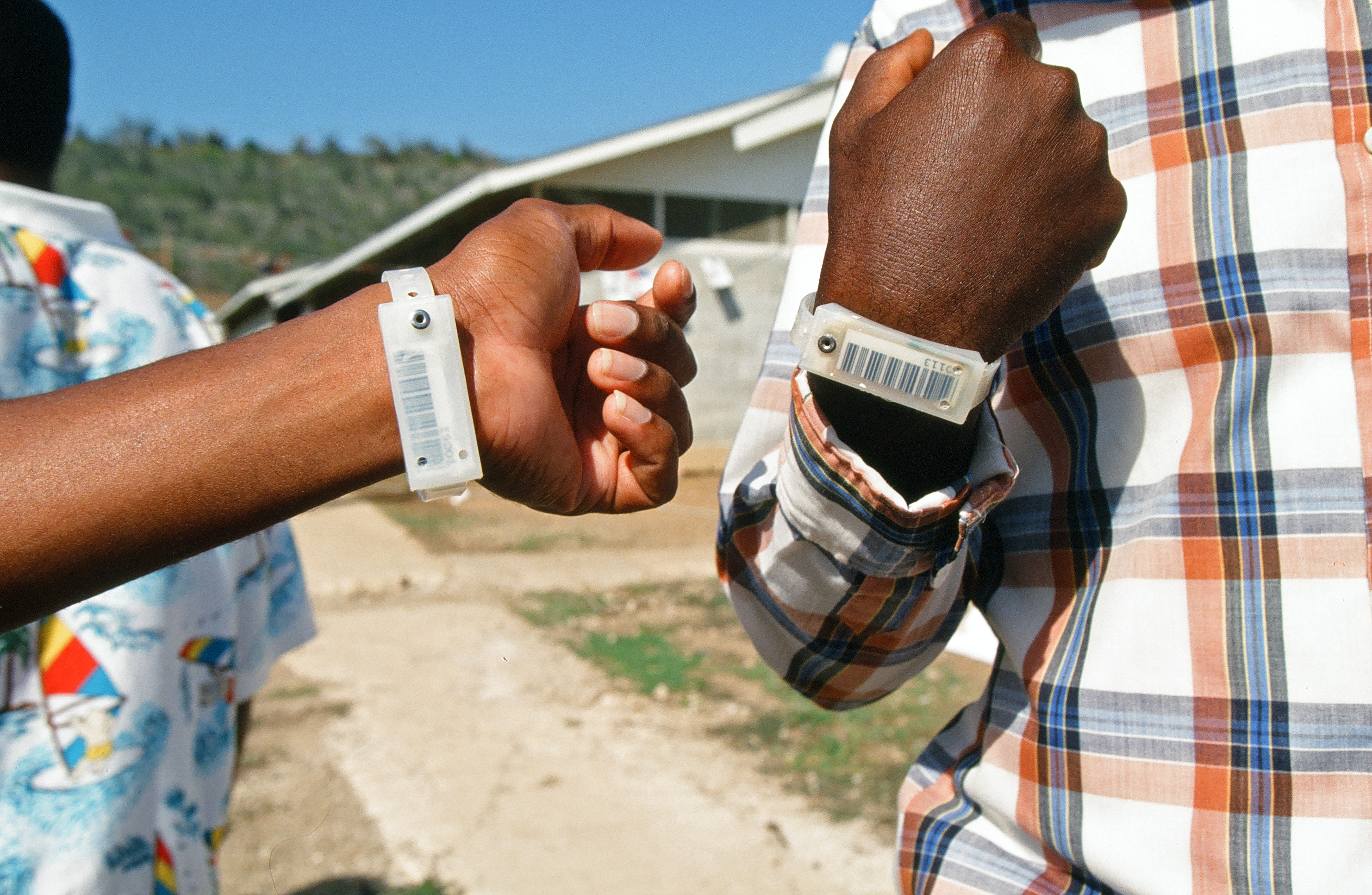
The U.S. military under Bush I had long resisted media inspection of the camp, but in November 1992, the late Michael Ratner helped win a suit to get press access. A valiant and dynamic lawyer who defended Guantanamo detainees for three decades until his death in 2016, Ratner wrote an article entitled “How We Closed the Guantanamo HIV Camp: The Intersection of Politics and Litigation,” which was published by the Harvard Human Rights Journal in 1998.
On Dec. 13, 1992, I traveled with the first journalists allowed to visit Guantanamo’s Camp Bulkeley. The following account was published the next week in the newsweekly Haïti Progrès in French. We are now publishing for the first time the English version to show the harsh reality, not the glorified myth, behind the policies of George H.W. Bush, who, after the Soviet Union’s 1989 dissolution, trumpeted a “new world order… in which nations recognize the shared responsibility for freedom and justice. A world where the strong respect the rights of the weak.”
The Haitians at Guantanamo:
Political Refugees or Prisoners of War?
December 13, 1992
Camp Bulkeley, U.S. Naval Base, Guantanamo Bay, Cuba
Total Haitian Population (12/13/92): 274
HIV Positive: 221
HIV Negative: 17
HIV Unknown: 36
Reason not deported back to Haiti: Valid claims for political asylum.
Reason not allowed entrance to the U.S.: No entrance for people who test HIV positive.
To truly appreciate the plight of the Haitian refugees being held in Guantanamo, Cuba, you have to step into the blazing sun and bleaching dust of Camp Bulkeley, a barren cluster of corrugated tin, cinder-block, and plywood barracks in a remote corner of the U.S. military base. As the Haitians barb-wired into the compound will explain, this desolate spot should remain a habitat for the flies, banana rats, and lizards that infest it, not for political refugees who are possibly HIV positive.
On the way to Camp Bulkeley from the main airfield, one travels by boat and van through the rest of the vast Guantanamo base, a 45 square mile chunk of Cuban territory which the U.S. military has refused to leave and for which the Cuban government has refused to accept rent, despite the dire conditions wrought by the U.S. blockade of the island nation.
The base is like a middle-class American town of 7,000 parachuted onto Cuban soil, complete with a bank, a library, mini-marts, a gas station, a bowling alley, a golf-course, beaches, and a mall. The orderly military homes have green lawns as neat as crew-cuts, and of course there is what no self- respecting American town can do without: a McDonald’s.
The very “normalcy” of the rest of the Guantanamo base makes the conditions of Camp Bulkeley catch one’s attention like a cry of pain. From the deserted highway leading to the camp, one can see giant vultures circling in the sky, like an aerial advertisement of the grim isolation of the once-abandoned military outpost.
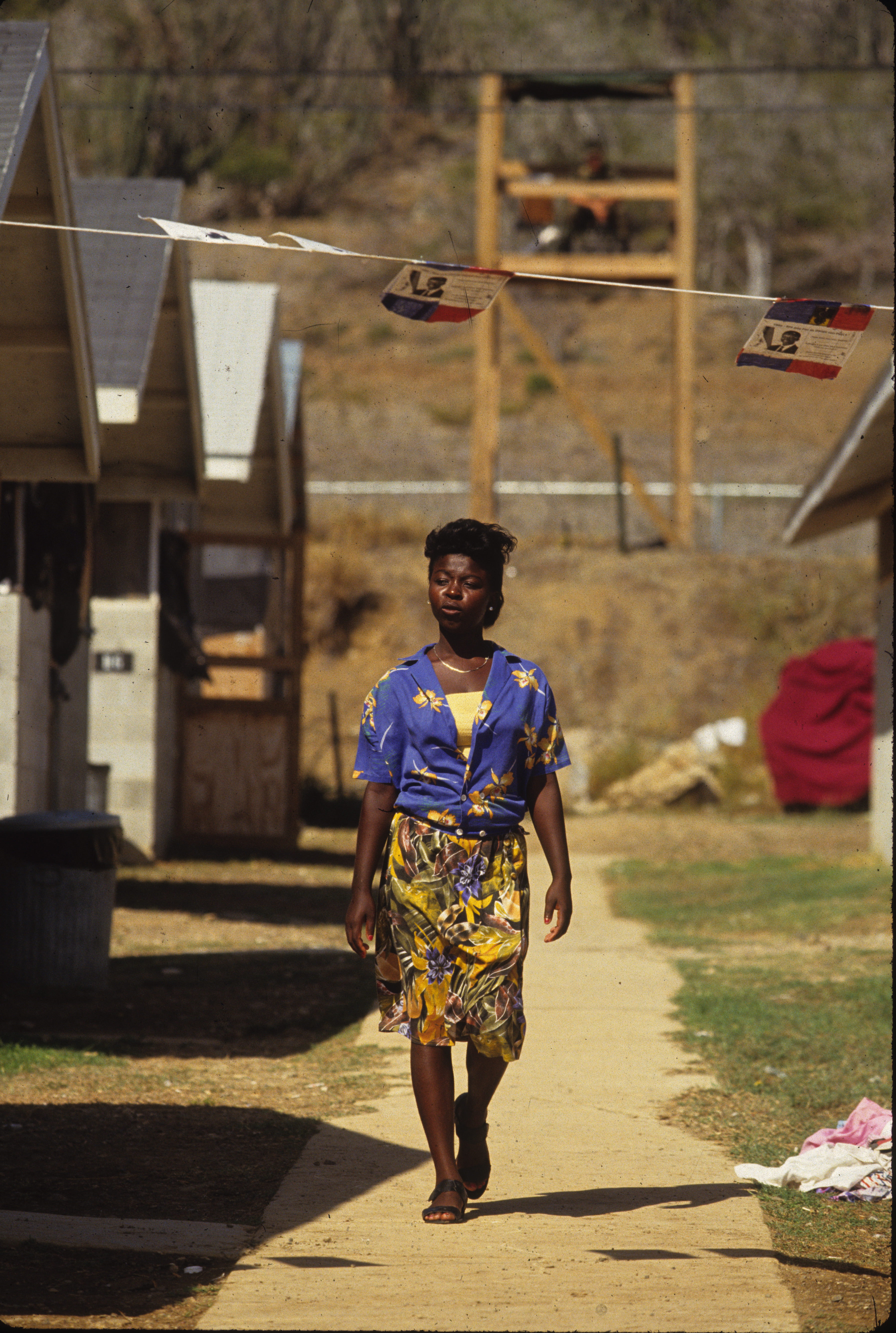
“Very often lizards, snakes or toads get into the bunks where people are sleeping,” said Frantz Limen, a young militant of KONAKOM. “We don’t even have a room to sleep in. They put us in a barracks. They give us a sheet and a cot. You sleep with nothing. That’s not how people live. In Haiti, people live like people.”
Poet Elmo Verdieu continued: “They put us in tin shacks… You find that in a slum. People who live in tin shacks are the most miserable. We didn’t come here to be satisfied with the little bit of food, second-hand clothes, and soda which they offer us. They are trying to make it out that we are fine here.”
The worst period, as the refugees and many press reports have recounted, was during the past summer when Col. Campbell commanded the 238-member military “Joint Task Force” (JTF) – composed of “elements” from the Army, Navy, Marine Corps, and Air Force – whose “mission is to provide emergency humanitarian assistance to Haitian migrants,” according to a JTF Brief Sheet. (Throughout our visit, military officials referred to the Haitians as “migrants,” a term with economic connotations, rather than as political refugees, which is the qualification they have earned even from the INS).
But the JTF mission was far from “humanitarian” last summer. When the refugees protested against their miserable conditions with a peaceful march on Jul. 17, 1992, thousands of soldiers surrounded the refugees and military police rampaged through their camp kicking, clubbing, and abusing men, women, and children, refugees say.
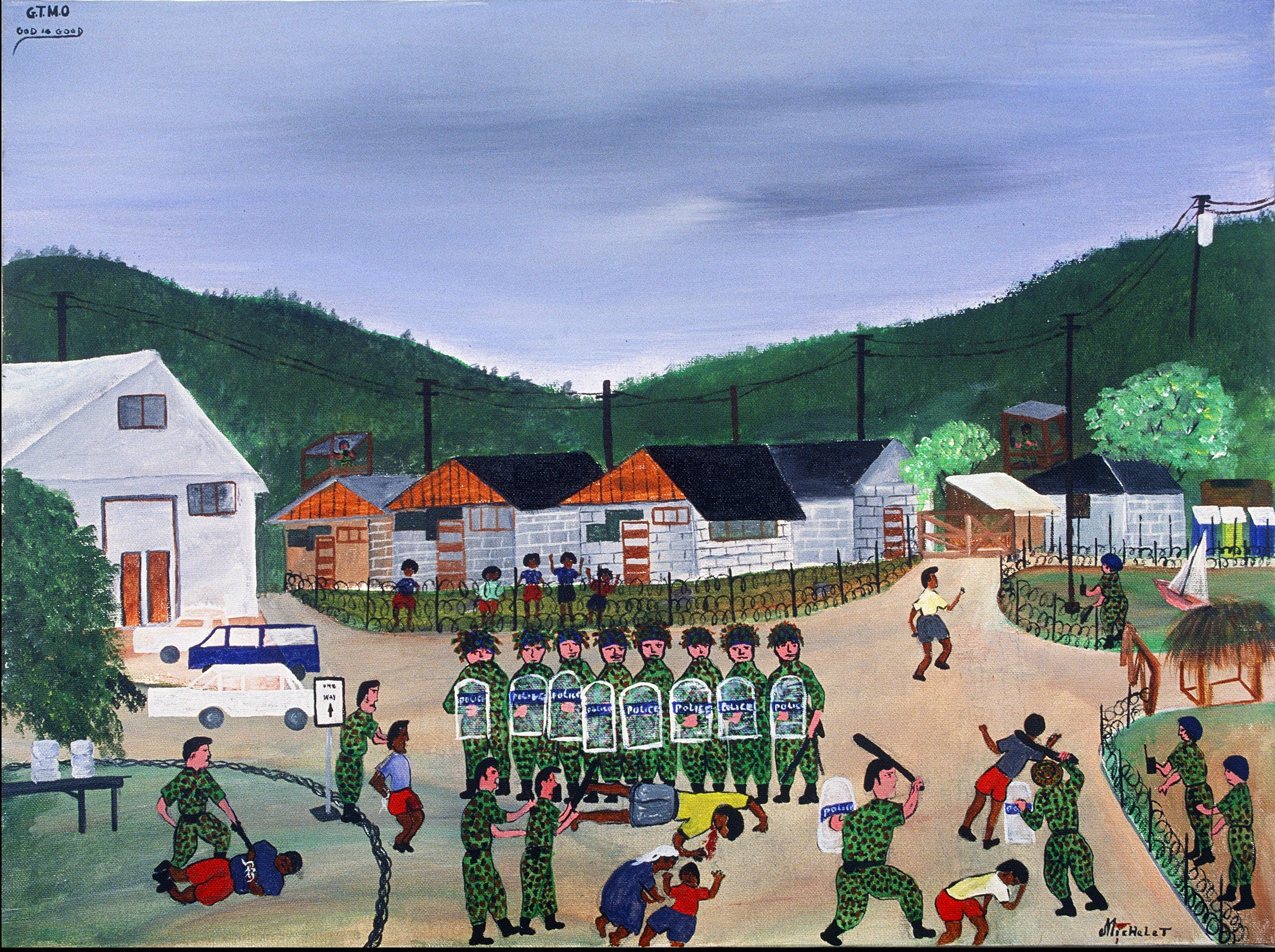
“There were soldiers who kicked us, who spit in our faces,” said Jean Benjamin of the Mouvman Jenès Site Soley, speaking of the period. “They beat us, broke our heads, made us lie face down on the ground while we were bleeding. When we lifted our head to look as they handcuffed us, they stepped on our heads with their boots. They mistreated us a lot.”
Some women refugees say they were kicked in the breasts and made to lie face down in the hot sun for two hours. When refugees were taken to the hospital for treatment, they remained handcuffed. The refugees claim that one detainee, Jules Virginie, was even disappeared. “For the past three months, we’ve asked for him,” said Frantz Limen. “They beat him, he was bleeding, they took him to the hospital, and he never came out. He is not in Haiti, he is not in the hospital, we don’t know where he is.”
The refugees’ stories of repression and abuse flow on. The U.S. military denies the charges. Col. Stephen Kinder, who filled the rotational post of JTF commander from Sep. 15 to Dec. 14, 1992, said in a Dec. 13 briefing for our press junket: “There’s nobody here abusing anybody or mistreating them. In fact, you’ll see a very strong bond between the military and the migrants that are here at the camp.”
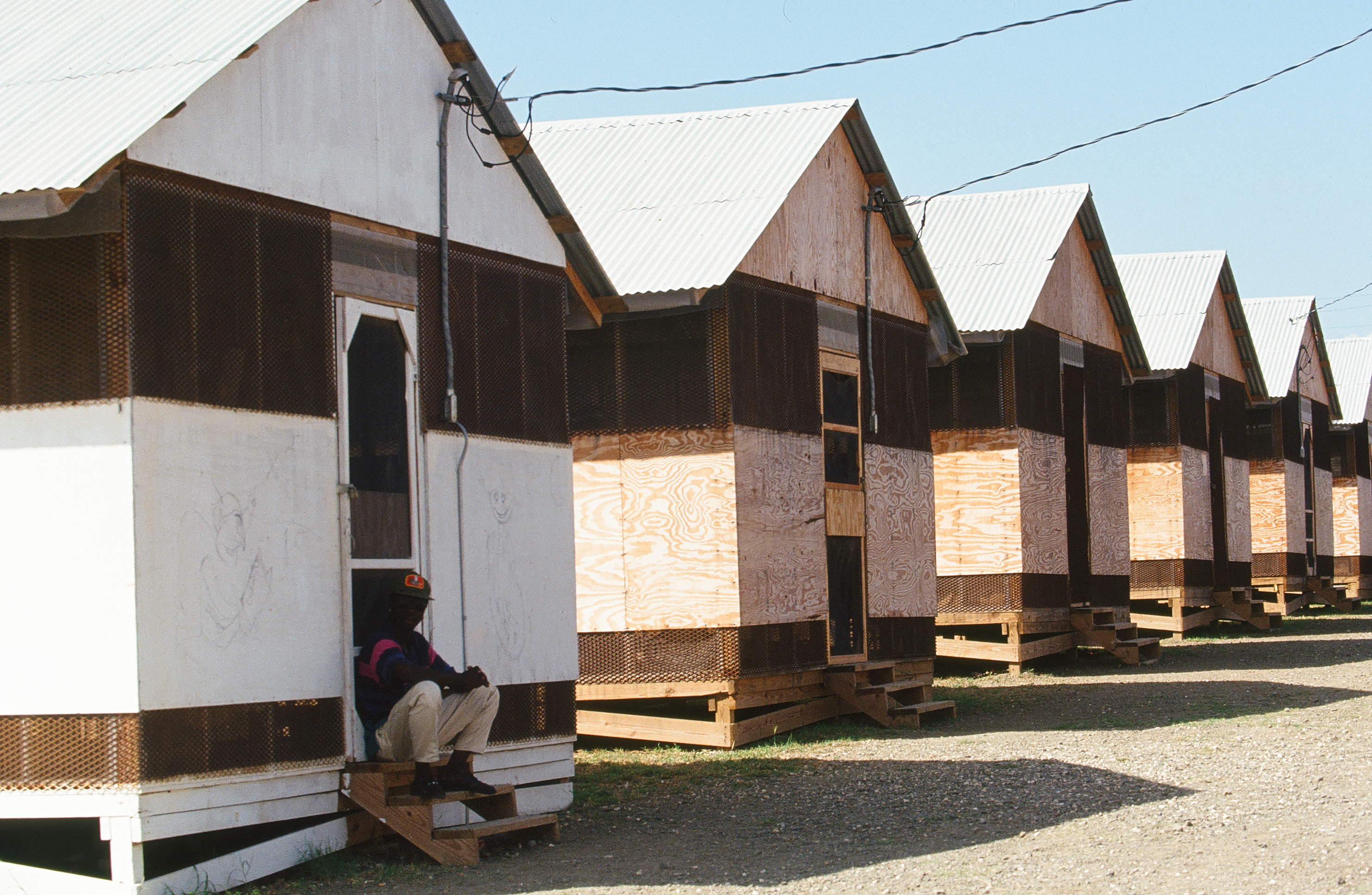
In fact, there were improvements in facilities and treatment under Kinder’s more liberal administration, the refugees say, and they acknowledge him as a “gwo gason” (good guy) and a “democrat,” as opposed to Campbell who was a “gwo kriminel” (big criminal). Kinder initiated weekly Friday meetings with the refugees, soccer games with the soldiers, and a several other reforms. He also pushed back the barbed-wire perimeter surrounding the camp, the reform that perhaps best symbolizes his policies.
In a press packet which the JTF gave to journalists on Dec. 13, one page lists the “Quality of Life Initiatives” under Col. Kinder: “Weight room; Chapel; Beauty Parlor; McDonald’s Trip For Children; Trips to Beaches/Fishing trips; Workshops/Arts and Crafts; Soccer, Basketball, Running; Cable TV (with Premium Channels); Movie Theatre; Ping Pong, Board Games, Cards.”
When we asked the refugees about the improvements listed in the press packet, they roared back objection. “You see that paper in your hand?” asked one young man, referring to the press packet. “Don’t believe it. It is all a facade.”
It was easy to see their point. The “Cable TV (with Premium Channels)”, for example, translated to a television set on a table in a communal barracks serving all 274 refugees. In some cases, the refugees even feel more pressure from the “helping hand.”
the efforts of the U.S. military to plaster a happy face on this dismal camp were painfully obvious.
“When they offer to take us to the beach, we don’t want to because we left our home due to political problems,” one detainee says. “We didn’t come to a military base to go to the beach… We find that we are dependent on the soldiers, if we don’t go to the beach, we will have problems, so we feel obliged to go.”
The initiatives also seemed aimed at pleasing the opinion of more than the Haitians at Guantanamo. “Since they learned that you [journalists] were coming, the colonel, major, and captain have all been worked up,” one man told Haïti Progrès. “They have been working in the yard, making stupidities and facades so when the journalists come they can say we live happily.” (Journalists had been prevented from visiting Camp Bulkeley until some media filed and won a legal suit on Nov. 9, 1992.)
In fact, the efforts of the U.S. military to plaster a happy face on this dismal camp were painfully obvious. As our carload of journalists rolled into the camp, we found grinning GIs cradling Haitian babies in their arms. Two soldiers applied themselves diligently to putting up screening on one of the camp’s barracks (a job begun only two days earlier, according to the refugees). Another soldier played a guitar in the shade of a tree where some soldiers and Haitians had gathered.
Even a primitive form of wage slavery has been introduced. “We require the migrants to clean the camp,” Col. Kinder explained in the press briefing. “They do a real good job most of the time.” For this and other chores, the refugees receive “Work Receipts” for the number of hours worked. With these cards – imprinted with a Haitian and an American flag and the number of hours worked – the refugees can buy things like soap and food in the commissary. “They make you a slave,” said another refugee. “They make you work. Then they pay you in a ‘diplomatic’ way so you don’t see it. It’s as if we were chained at the ankle and the wrist. They have to use you for something, so they make you pick up garbage.” One can only imagine the JTF’s psychological strategists figuring that this rudimentary “incentive” system will foster “American” values like the “work ethic,” individual responsibility, and entrepreneurial zeal.
INS spokesperson Duke Austin: “They’re just going to die anyway, aren’t they?”
Despite reforms, refugees say they still do not get treatment equal to others at Guantanamo. Col. Kinder claims that the refugees “get health care… Every time somebody’s nose is running, we’re taking care of it.”
The refugees, however, say that their medical needs are often not met. They gave a recent example where a refugee was bitten on the head by a scorpion and received no treatment, while a few days later, an American bitten by a scorpion was taken to the Guantanamo Naval Hospital.
Above all, the refugees see no reason why they should not be allowed to travel to the United States to live among their families and friends. They do not trust the testing of the military doctors, who they characterize as “charlatans” and “veterinarians.” The refugees say there are frequent changes in their diagnoses and long-married couples get incongruously mixed results of HIV positive and negative. But no matter what their status, “there is a law which says that medical matters should not be mixed with political matters” as one refugee stated. “A political refugee has rights too.”
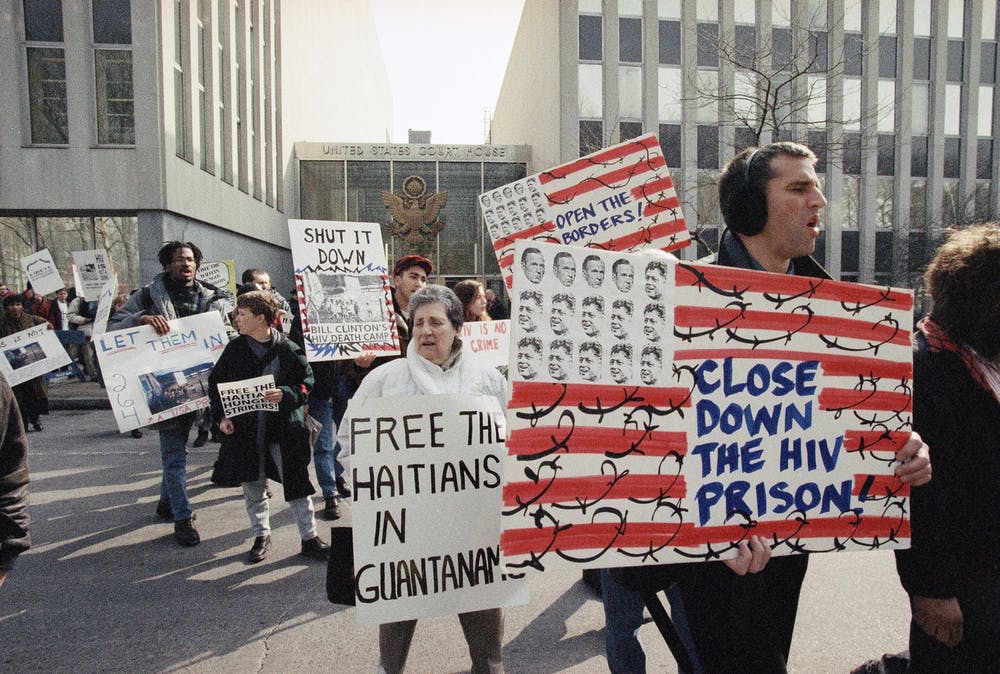
The most blameworthy party in the whole affair is the INS, which made sure not to have any representative on hand when we visited Camp Bulkeley. The INS’s policy under the Bush Administration of applying HIV immigrant exclusion to Haitian refugees is best summed up by the Dec. 12, 1992 statement of INS spokesperson Duke Austin: “We have no policy allowing people with AIDS to come enter the United States for treatment… They’re just going to die anyway, aren’t they?”
“Today we are suffering under Bush and the American soldiers because we are Haitian and we are black,”
Many have looked to promises by President-elect Bill Clinton to remove HIV infection as a bar to immigration. But the refugees at Guantanamo should not have to wait. They are not “immigrants” but “refugees,” who should not even have the HIV screening applied to them. No other refugees receive such screening before entry into the U.S.. Every day spent in the miserable conditions at Guantanamo is another day lost in lives which have already endured the tragedy of being chased from their homeland by ruthless thugs. Two refugees tried to commit suicide the week before our visit. Col. Kinder termed them “superficial attempts.”
The refugees in Guantanamo have had much time to reflect on the forces that have quarantined them in Camp Bulkeley, and it is important to ponder the analysis of one refugee who bade us farewell while standing before a circle of murals painted on sheets covered with militant slogans and pictures of President Jean- Bertrand Aristide: “Today we are suffering under Bush and the American soldiers because we are Haitian and we are black,” he said. “When Cubans go to the U.S., they don’t go through these tribulations… The U.S. government still has dealings with the [de facto] Haitian government. But [Fidel] Castro, he doesn’t have any relationship with the U.S. government. Castro is not friends with Bush, but Bush still has his friends in Haiti. That is why today we are paying the consequences. President Aristide himself, he doesn’t want to be friends with Bush… If Aristide agreed today to get into bed with Bush, well, today we wouldn’t be here… That is why we ask: why, why, why, why?”










[…] The second of two articles […]